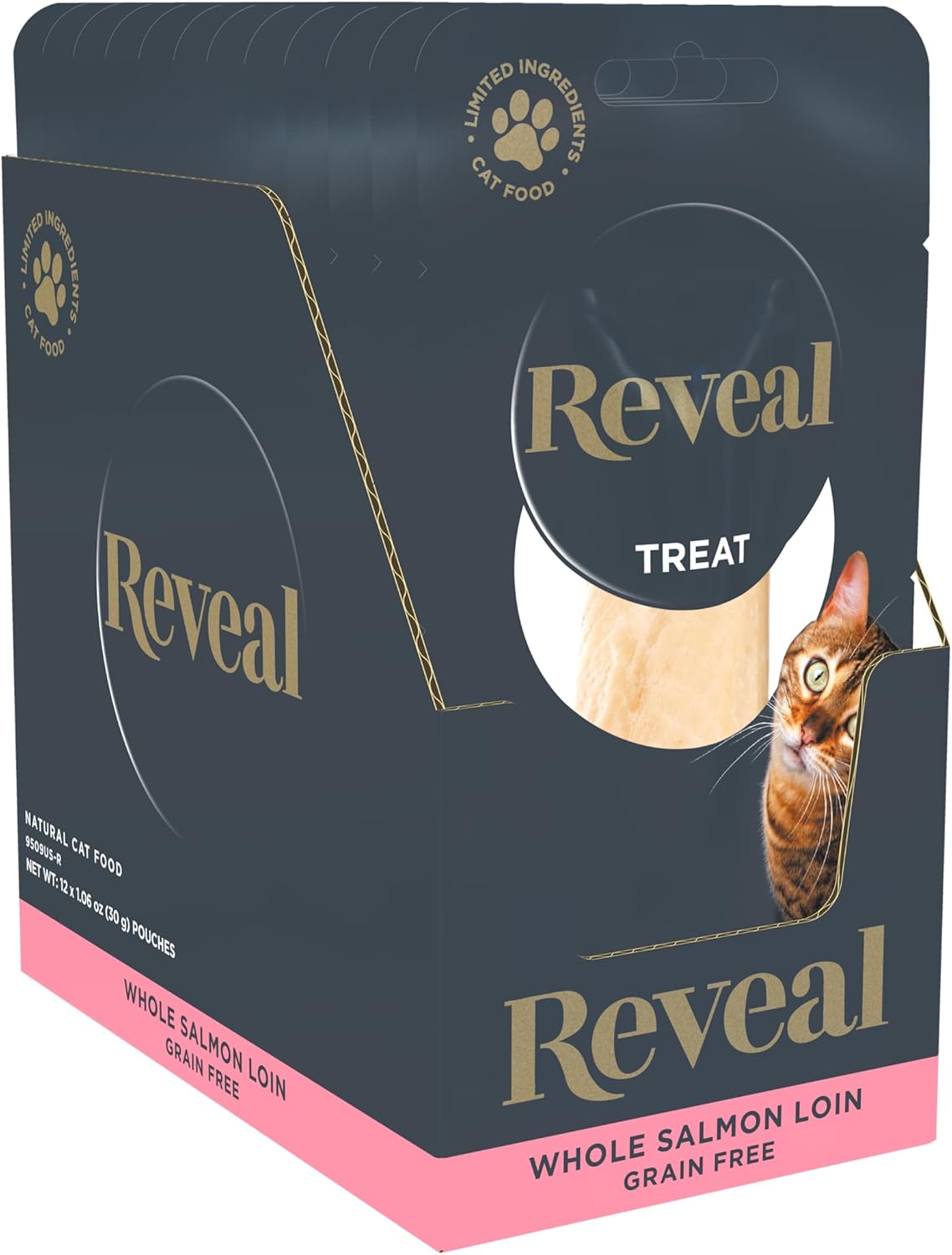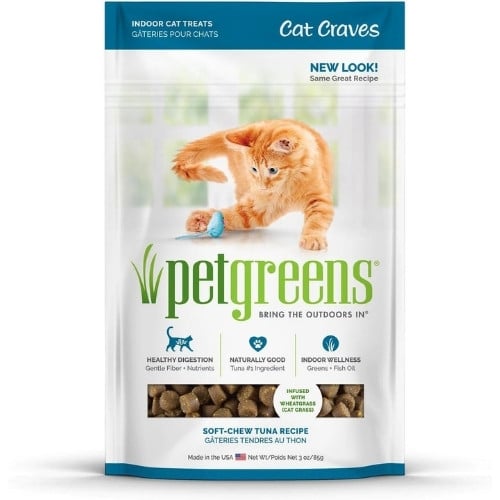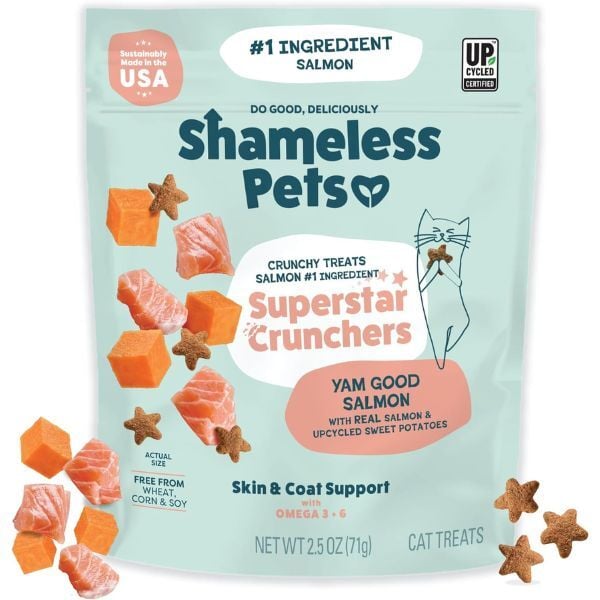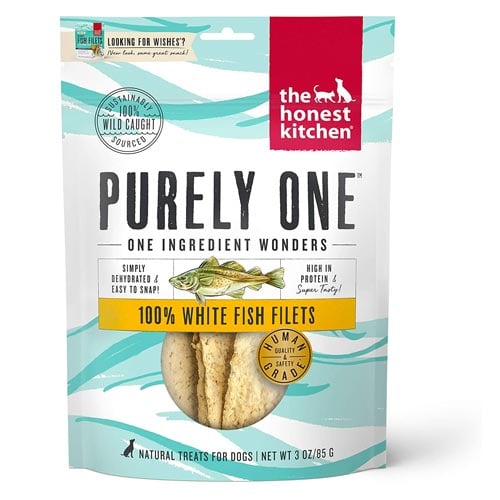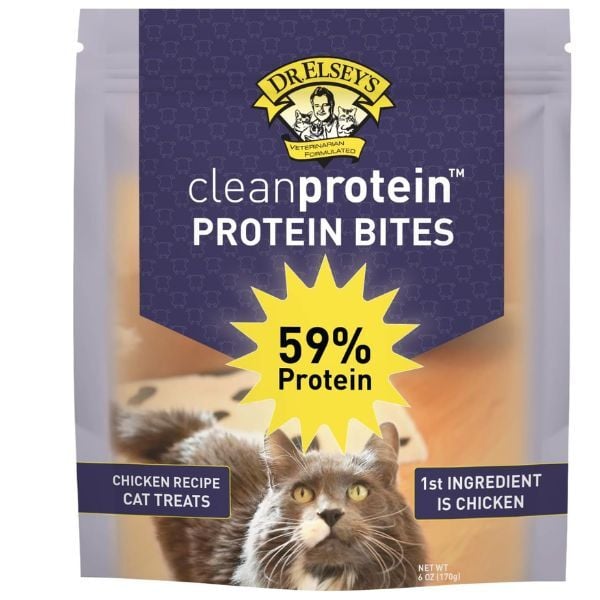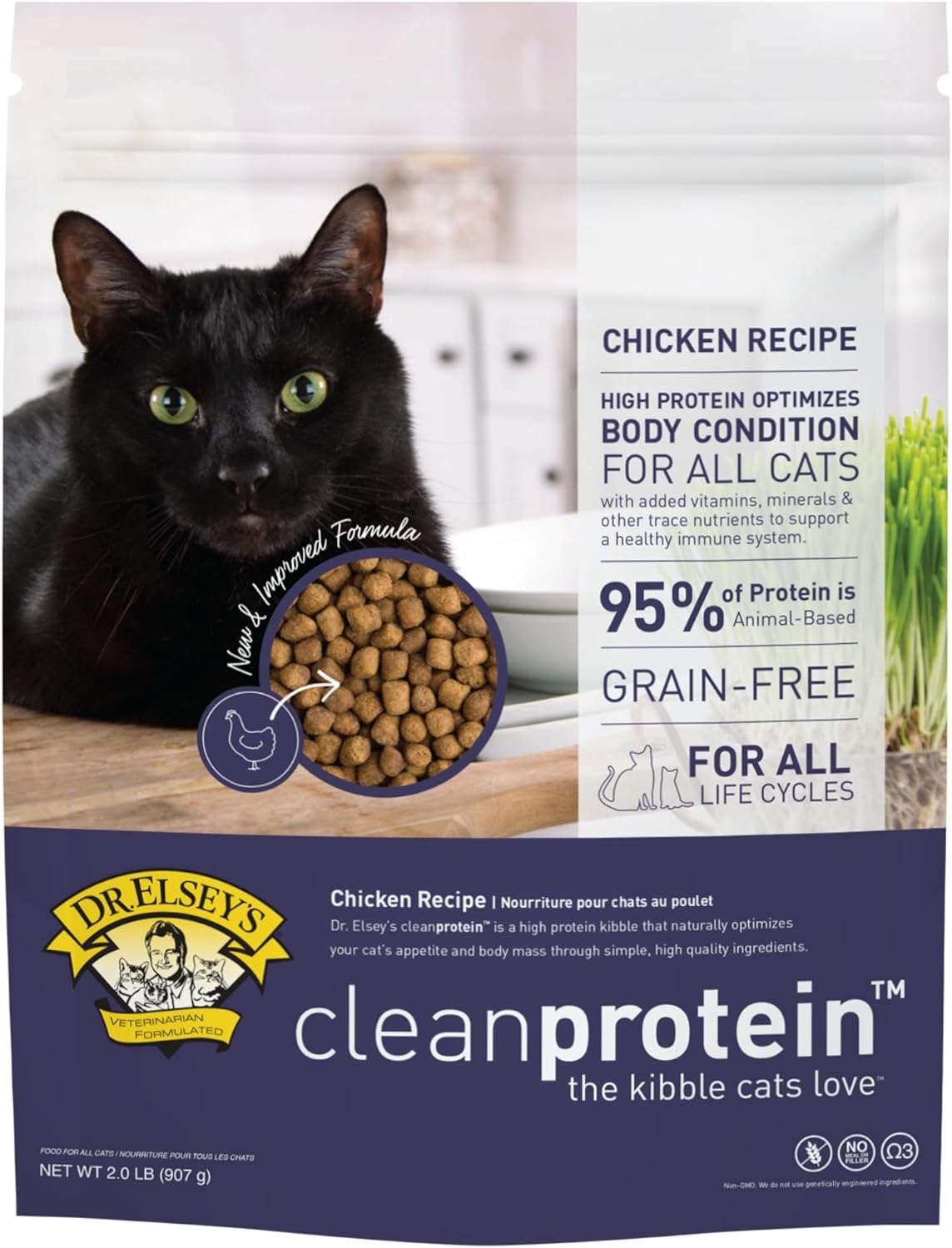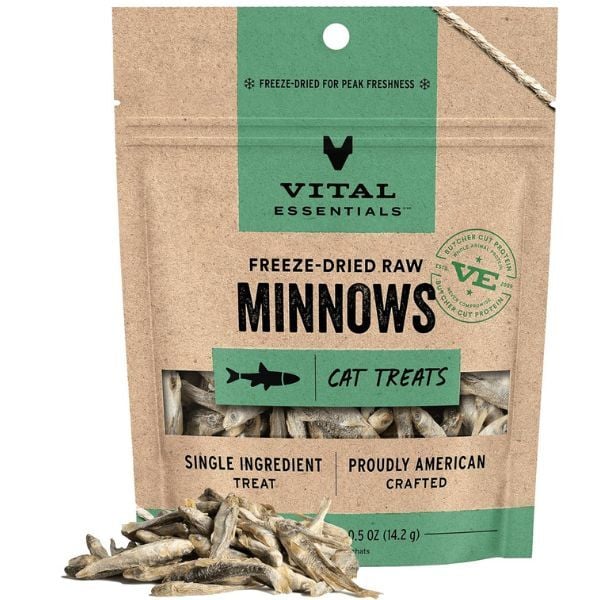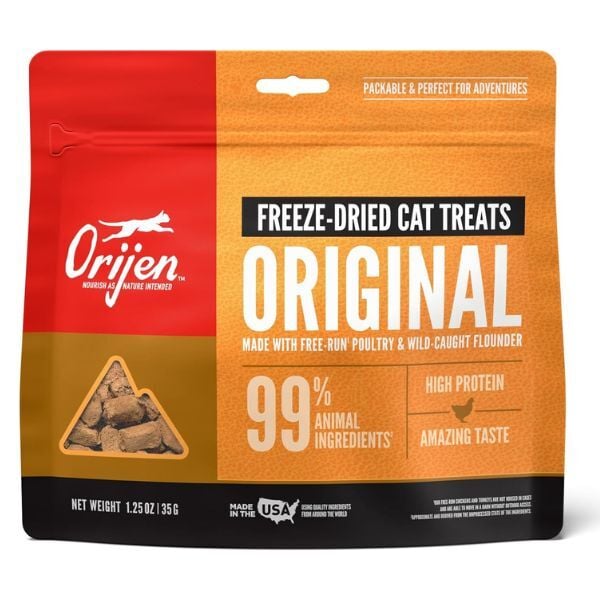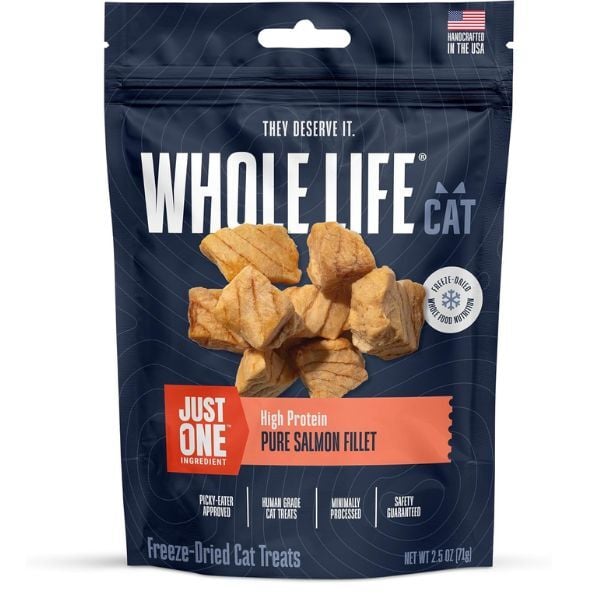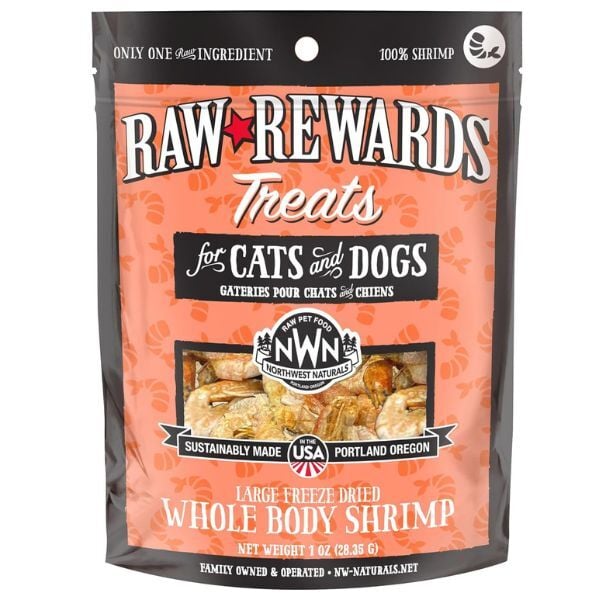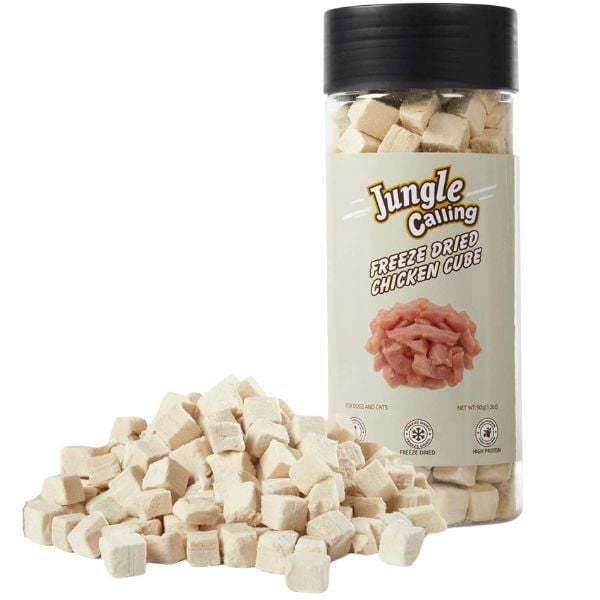
Humans like to snack! How much you may wonder? Well according to Forbes, about 90% of all Americans consume one to three snacks a day.
Additionally, the Mondelez International’s “State of Snacking report" states that 59% of adults worldwide prefer snacking to eating a meal.
So based on this, it is no wonder veterinarians get asked all the time, “Which treat is best to give my pet?”
If chosen correctly, treats can supplement your pet’s health as well as be very beneficial to their overall well-being. Not to mention the training that often accompanies treating or the mental stimulation of an interactive game.
Because every pet is an individual with their own personality and preferences, some treats may be accepted readily, whereas some pets require a little trial and error before you find the treats they love. With pet individuality in mind, let’s explore what sorts of treats are ideal for cats.
Skip Ahead
- How to Choose Quality Cat Treats
- Top-Tier Cat Treats
- Good Cat Treats
- Lickable Cat Treats
- Raw (Freeze-Dried) Cat Treats
- Calming Cat Treats
- Cat Treats for Dental Health
- Cat Treats for Healthy Skin & Coat
- Cat Treats for Joints & Mobility
- Immune Support Treats for Cats
- Cat Treats to Help with Hairballs
- Cat Treats for Stomach Health
- Treats for Cat Urinary Health
What to Think About When Selecting Cat Treats
Finding good cat treats can be a chore. If cats were omnivores like dogs and didn’t lack sweet taste receptors, fruit and vegetable treats might make sense.
But since cats have more carnivorous tastes, finding treats they will accept and are good for them means meat treats are best.
Some things to look for when selecting meat treats:
-
Make sure the treats are cooked (see section below for freeze-dried treats).
-
Look for a treat with a recognizable meat source as the first ingredient.
-
Check the nutritional analysis to see what the protein, fat, fiber, and moisture content is. It is essential that the protein percentage is high and that there are suitable ranges of fat and fiber.
-
They should not have added salt.
-
Avoid treats with fillers, such as sweeteners, salt, fats, or grains (corn or rice), as they don’t provide much nutritional value.
-
They should be free of preservatives and artificial coloring or flavors.
-
Check that the size and texture, which can affect digestibility and palatability, are suited to your cat’s age, preferences, and dental health.
-
Be sure that the treat is suitable for your cat’s life stage. For example, do not select treats that are too large for kittens, as they can cause them to choke. If you have a senior with dental issues or possibly arthritis in their jaw, do not give them large and hard treats that are difficult to chew.
Carbohydrate Dilemma: The amount of carbohydrates needed to make a crunchy cat treat is a carbohydrate level that is too high for cats.
Total daily carbohydrates for food and treats, should not exceed 10% of their daily intake to maintain cats at their ideal body weight. This percent should be even lower, around 3%, for diabetic or obese cats.
Use the following calculation to determine the percent of carbohydrates in a treat:
100-crude protein (%) – crude fat (%) – crude fiber (%) = carbohydrate (%)
If the treat contains predominately protein and fat, the carb percent may be lower.
There is no denying that it is difficult to find appropriate cat treats. Finding cat treats that are mostly meat and are also cooked is challenging (see warnings about raw treats below).
Any treat that has that crunchy texture is high in carbohydrates and should be given in moderation, i.e., not as the sole treat option for your cat. This is especially true for cats that are overweight or have diabetes.
Lastly, be mindful of the fat content of any treat you are giving to your pet. Your cat does not want to experience intestinal upset (especially pancreatitis) any more than you want to clean up their diarrhea or vomit. Unfortunately, the pet food label itself doesn’t tell us much about fat level. Here’s how to determine the fat level in a food or treat:
How to Calculate Fat Content in Cat Treats (grams of fat per 1000 kilocalories)
The terms kilocalories (kcal) in pet foods and calories in human foods are interchangeable!
For example, a large apple has 120 human calories, which, if fed to a cat, is counted as 120 kilocalories.
Source: K9 Weight Challenge
On the treat label, find the fat % and the energy of kcal per kg of food (kcal/kg)
1) Add 1% to the fat % on the label. Example, 6% + 1% = 7
2) Take the kcal/kg of the food or treat and divide by 10,000
3) Divide the answer to step 1 by the answer to step 2. This should give you the number of grams of fat/1000kcal. Note: Use the number from step 1, not the percentage. For example, if the fat % was 7%, use 7, not 0.07)
4) Compare your result against the chart below.
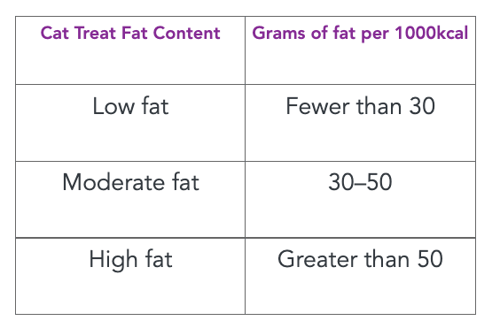
If you do your calculation as described above and you find that your cat’s treats are high in fat, it’s time to switch treats.
How to Calculate Protein Content in Cat Treats (grams of fat per 1000 kilocalories)
Use the same calculation as above, but add 1.5% to step 1 instead of 1%.
Note: On average, an adult cat needs 5.2 grams/kg of body weight (11.5 grams/lbs) in protein. A minimum protein level of 26g/100g dry matter (30%) is the Association of American Feed Control Officials (AFFCO) recommendation for diets. Some senior cats need almost 50% of their diet in protein. Therefore, look for treats that have protein as the highest percentage.
Any time you add anything new to your cat’s diet, especially if they have underlying medical issues, speak to your veterinarian to be sure it is ok. Additionally, your veterinarian will be able to guide you on the best options to use for your special feline.
Top-Tier Treats for Cats
Reveal Natural Cat Treats are made from a single real protein source. They don’t contain artificial flavors, colors, or preservatives and they are grain-free.
Another good cat option is Pet Greens Cat Craves. These treats have meat as the first ingredient, have recognizable ingredients, and contain omega-3 fatty acids.
Icelandic+ Mini Cod & Shrimp Combo Bites Adult Crunchy Cat Treats are 70% protein and only two ingredients, cod and shrimp.
Good Cat Treats
The treats selected for this category are treats derived from whole foods. Some of our favorites include:
No one says dry cat food can’t be used as treats. Dr. Elsey’s CleanProtein dry cat food is a veterinary-formulated diet that is high in animal-based protein, low-carb, and contains omega-3 fatty acids. It doesn’t contain any fillers, grains, or artificial preservatives.

Lickable Cat Treats
There are benefits to using wet treats, like using them while training or for senior cats with dental issues. With this kind of treating, your cat doesn't have to take time to chew the treat when you're repeating a training activity or suffer in pain if they struggle chewing.
Catit Creamy Lickable Treats are great with 3.1 or 4.4 calories per tube, depending on the flavor.
A popular lickable treat is Churu, but some of their flavors have more calories (6 kcal/tube) than the Catit treats.
Raw Cat Treats
Raw foods come with their own set of possible dangers, especially if your pet is young and does not yet have a fully developed immune system, or in older animals with weakened organs and immune systems.
We don’t know what kind of sickness-causing bacteria are lurking on these raw products. Some of the potential bacterial contaminants include E.coli, Salmonella, and Listeria, amongst many others. Cooking the meat reduces/eliminates this risk.
If you have ever had food poisoning, you will understand this concern. In general, cooked treats are safer for you and your pet.
But we know that the popularity of freeze-dried treats is on the rise. Therefore, we wanted to guide you on what to look for and give you some treat suggestions.
Raw Treat Guidelines
- Look for whole ingredients (like heart, liver treat, or chicken giblets), so they have high nutritional value.
- Is the treat grown, harvested, and packaged in the US? It should be. This is super important from a product safety standpoint. I would rather feed a treat with these whole food ingredients than some of the amorphous blob treats available online and in pet stores.
Note: Since freeze-dried treats have a low moisture content, the risk of constipation in cats is increased even if only using small amounts. Be sure to monitor your cat closely to be sure they are pooping normally.
Note: Since 30% of cats over the age of 10 have chronic kidney disease, excessive protein in their diet can be harmful. In order to protect your cat, be sure to use a high-protein treat formulated for seniors.
Freeze-Dried Cat Treat Recommendations
Vital Essential Freeze Dried Raw single-ingredient cat treats come in a variety of flavors. They are safe for all life stages, are made with whole animal protein, minimally processed, and are made in the USA.
ORIJEN Original Freeze-Dried Cat Treats are 99% animal ingredients and come in five flavors. They are made in the USA, and they are tested to be sure the ingredients are safe, as well as digestible and palatable. They are only 1 calorie per treat.
Whole Life cat treats contain a singular human-grade ingredient, contain no chemicals, additives, fillers, or preservatives, are made in the USA, and each batch is tested and verified safe.
Northwest Naturals Raw Rewards Freeze-Dried cat treats are made from one human-grade ingredient: protein. They are sustainably made in the USA, and there is an on-site USDA inspector supervising. As a bonus, you can give them to dogs, and technically, you can eat them too, since they are certified for human consumption.
Jungle Calling Freeze Dried treats can be given to cats and dogs. They are single-ingredient treats that contain no preservatives, and they are rigorously tested for safety.
Please remember to ALWAYS wash your hands as well as thoroughly clean any utensils or surfaces that come into contact with raw treats. Use caution when using raw treats if pregnant, around children less than five years of age, and if anyone in the home is immunocompromised.

Cat Treats With Benefits
Cats are truly unique, wonderful, and magical creatures. They are capable of climbing trees, leaping through the air from high places, and propelling medication six feet across the room.
It is a good thing that cats have nine lives because, clearly, they are not interested in their health and safety. That is where you come in!
Since treating cats with medications can be a challenge, prevention of issues is the key to good health.
One easy way for you to aid in the prevention of some health issues is by providing your cat with treats that have benefits.
Cat Treats for Calming & Anxiety
Stress can have a major impact on your cat’s health. Stressed cats can suffer from medical issues, including urinary tract and gastrointestinal tract problems. It weakens their immune system, which means they are more susceptible to other illnesses. It can also create behavioral problems.
While we can’t always control or completely eliminate the stress in our cats’ environment, we can provide them with treats that help them manage stress. Controlled stress means an improved immune system. When a cat's immune system is functioning optimally, they suffer from fewer medical issues.
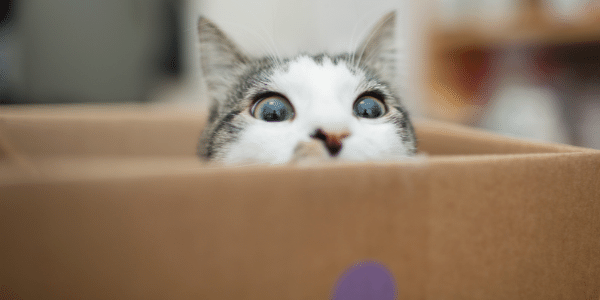
When looking for calming treats for cats, try to find ones that contain pheromones, tryptophan, rosemary, chamomile, L-theanine, colostrum, and/or alpha-casozepine (hydrolyzed milk protein).
Use calming treats when you have company, your cat is boarding, they have repeated issues with cystitis, or any time there are any changes occurring in the environment. Our top four recommended treats include:
-
Vetoquinol Zylkene Behavior Support Calming Capsules for Dogs & Cats
-
VetriScience Calm & Confident Composure Pro Bite Size Chews for Dogs and Cats

Cat Treats for Dental Health
Good dental hygiene is essential to overall health. Periodontal disease can cause cats to develop swollen and painful gums, loose teeth, and damage to the jawbone. Additionally, it can cause disease in other parts of the body, such as the heart and kidneys.
While we definitely encourage you to learn how to brush your cat's teeth, many of our feline friends are, unfortunately, not really agreeable to holding still for us to get pet-safe toothpaste in their mouths.
But the good news is that there are treats and food supplements that do most of the work for you. Here are a few favorites:
 If you decide to buy a feline dental treat aside from the ones listed above, check to see if the VOHC seal is on it. The dental treats with this seal have been reviewed and approved by veterinary dentists.
If you decide to buy a feline dental treat aside from the ones listed above, check to see if the VOHC seal is on it. The dental treats with this seal have been reviewed and approved by veterinary dentists.
While these next two products do not have the VOHC seal, they are backed by studies that prove they are effective.
-
VetriScience Healthy Mouth Perio Plus Cat Teeth Cleaning Bites
-
VetriScience Healthy Mouth, Dental Health Powder for Cats and Dogs
Cat Treats for Fur and Skin Health
The skin is one of the largest organs of the body and is critical to a healthy immune system. Keeping your cat's skin healthy not only improves their health but also helps them have a beautiful coat.
Typically, treats that benefit our cats’ fur and skin also provide additional anti-inflammatory benefits. So these treats really pack a lot of bang for the buck!
Cat Treats for Joint Health and Mobility
Cats are leapers and jumpers. But because they are so agile and good at hiding pain, many cat owners do not realize that all this activity can cause inflammation in the body. This inflammation eventually causes arthritis in cats.

Cat treats designed to help with joint health and mobility help to control inflammation, ease pain, and protect the cartilage of the joints. All in all, they allow your cat to live a longer, more mobile, and pain-free life.
Most joint supplements should contain glucosamine and chondroitin. But the addition of other ingredients, such as avocado, soybean extract, Boswellia, probiotics, etc., is great for added support.
There are many joint supplements out there, but these are some of our favorites as we've seen positive experiences with many cats:
Cat Treats for Eye/Respiratory Health and Immune Support
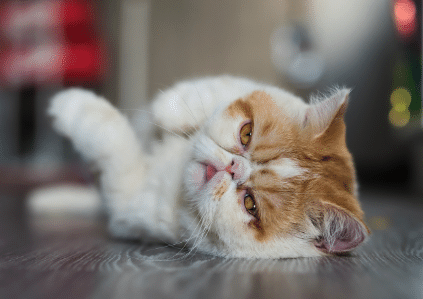 Having a strong immune system is essential in fighting off infections and disease. Finding easy ways to boost your cat’s immunity, especially if they are a senior, have cancer, or have FeLV/FIV, is simpler when you can do it with treats.
Having a strong immune system is essential in fighting off infections and disease. Finding easy ways to boost your cat’s immunity, especially if they are a senior, have cancer, or have FeLV/FIV, is simpler when you can do it with treats.
Upper respiratory infections in cats affect not only the respiratory system but often their eyes as well.
Supporting the respiratory system and the eyes helps further support their immune system since you are boosting those areas' own defense mechanisms.
Typically, these types of treats contain lysine, antioxidants, prebiotics, etc.
Cat Treats for Hairball Issues
Hairballs are literally no fun for anyone (unless you have a dog that thinks they are tasty!). Besides the grossness of hairballs, the retching feeling cats experience is unpleasant. Even worse, there is always the potential that these hairballs can make their way down the gastrointestinal tract and cause an obstruction. Fortunately, there are treats that help lessen or eliminate hairballs.
Look for treats that use omega-3 fatty acids, vitamins, fiber, and other essential enzymes to break down materials that hold the hairball together.
NOTE: Use caution if you feed over-the-counter hairball diets. They can cause high levels of fat in the blood and make some cats very sick.
Cat Treats for Gastrointestinal Health (Tummy Troubles)
Cats, like people, often suffer from tummy troubles. It can be from stress, diet changes, or medical issues. Gastrointestinal (GI) health is critical to your cat’s overall well-being. Keeping it in balance is essential.
Probiotics, which are found in most GI support treats, are found to provide benefits to the entire body in addition to the GI tract. Fiber is another important ingredient in GI treats. Fiber helps by acting as a prebiotic, helping bulk stool, and keeping the GI tract functioning.
Cat Treats to Support Urinary Health
Some cats, due to stress or genetics, have a tendency to develop sterile cystitis, urinary tract infections, crystals, and stones. All of these issues are painful and can add to stress, especially if medications are needed.
Treats that contain glucosamine benefit the bladder because the mucous layer that lines the bladder is very similar chemically to that of joint fluid. When this lining is protected, it helps make the bladder more resistant to inflammation.
A urinary treat that contains D-mannose is also helpful because it helps remove harmful bacteria.
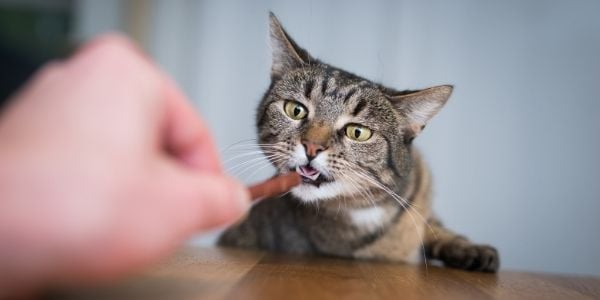
Providing cats with treats they love always gives us warm fuzzies, but when you know they are gaining extra benefits from them, it is even better.
Treats should never comprise more than 5% of your cat’s daily total caloric intake. Maintaining your cat at a healthy weight and preventing them from being overweight is another great way of preventing health issues.
Remember, whether it is a ‘regular’ treat or one with benefits, aim to use treats that don’t contain artificial colors, preservatives, fillers, or other ingredients that you yourself would not eat (or don’t recognize).


